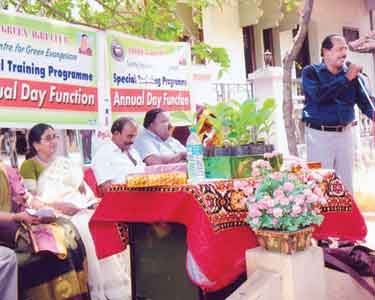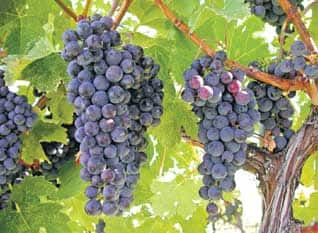Mulberry, the food plant of silkworm is a perennial crop and once planted can be maintained for years together without much effort.
Indiscriminate use of chemical inputs is an indeterminable setback to many industries associated with agriculture.
Similarly is the case in sericulture. Mulberry, the food plant of silkworm is a perennial crop and once planted can be maintained for years together without much effort.
Production of quality mulberry leaves is mandatory for the sericulture farmers to ensure healthy growth of silkworms and better silk thread harvest.
Therefore the agronomical practices such as application of fertilizers, weeding, irrigation, plant protection measures at bimonthly intervals after each leaf harvest are important for good and healthy leaf production.
Indiscriminate use
Like in many crops, here too chemical inputs are indiscriminately applied to gain short term results.
“In general one acre of mulberry garden receives 1.5 metric tonne of fertilizers and 12-15 sprays of toxic insecticides annually which causes deleterious effects on the beneficial organisms and on silkworms,” says Dr. V. Sivaprasad, Director, Central Sericulture Research and Training Institute, Central Silk Board, Mysore.
Though chemical farming initially yields good results, its negative impact on leaf yield, quality and cocoon productivity is pronounced in a few years.
Therefore, promotion of organic farming in sericulture is imperative to sustain the industry and intensive research on production of organic silk is in the pipeline, he adds.
The institute has already standardised application of a number of organic inputs like farmyard manure, compost, vermicompost, and green manures ,and developed special formulations of bio-fertilizers and foliar sprays to minimise the use of chemical fertilizers and to organically promote soil health in mulberry gardens.
Other methods
Other eco-friendly formulations like bionema and nemahari to control root knot nematodes, chetak and navinya for management of root rot disease and spraying strong jets of water on mulberry garden are found effective to manage sucking pests and are advised for farmers.
Similarly, thermal weeding and black polythene mulching are also introduced to avoid application of weedicides as well as to overcome the labour scarcity problem for manual weeding.
According to Dr. Sivaprasad, about 12-15 metric tonnes of sericulture waste, comprising silkworm litter, unfed leftover mulberry leaves, soft twigs, farm weeds etc are obtained from a hectare of mulberry garden annually, from which the plant nutrients such as nitrogen (280-300kg), phosphorous (90-100kg) and potash (150-200kg) as well as all essential micro nutrients can be generated when properly composted.
Better than manure
This is nutritionally much superior than farmyard manure. The technology for composting sericulture waste is widely popularised by the institute among growers.
Most of the farmers in different parts of the state supplement the nutrient requirement of their mulberry garden with the locally available organic inputs like farmyard manures, composts, pressmud, poultry manures, sheep and goat manures.
Sheep penning
Sheep penning is also a tradition practised commonly in Tamil Nadu for enhancing soil fertility naturally.
“Organic farmers successfully harvest cocoons all through the season and their average cocoon production is greater than 80 kg per 100 disease free laying while the farmers who practice chemical based farming frequently met with crop failures and their productivity remains below 60kg.
Tamil Nadu is leading in silk production mainly because of more adoption of organic farming practices, explains N.Sakthivel, extension scientist, Central silk board, Srivilliputtur.
A technical bulletin titled “Organic farming in mulberry: Recent break through,” for the benefit of sericulture farmers, field functionaries and researchers has been published by the board.
Website
The details of eco-friendly inputs of sericulture and the packages of organic farming are available on the website csrtimys.res.in














